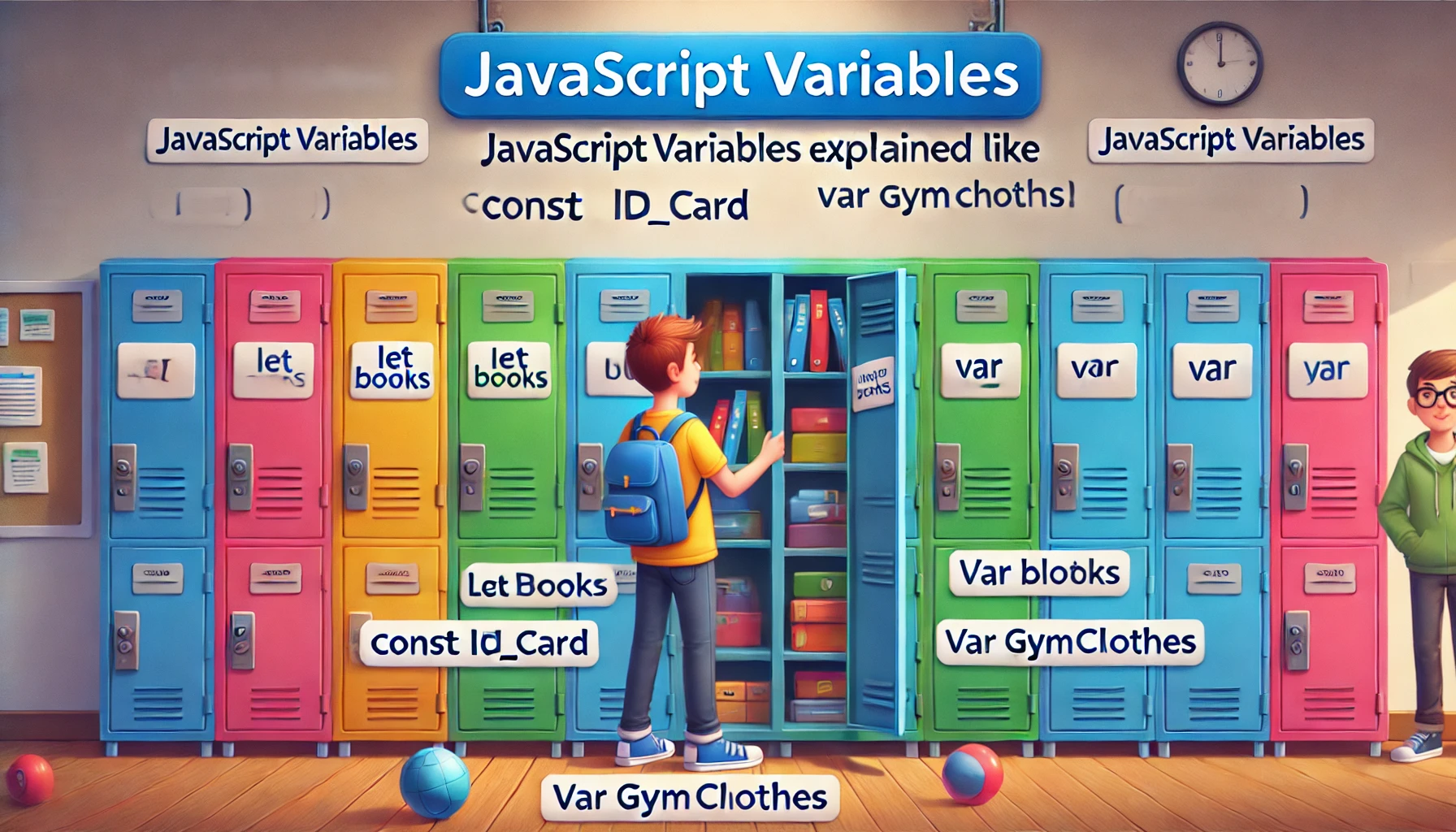Introduction
Imagine a school where every student has an access card. Some cards allow entry into every room in the building, while others only unlock a specific classroom or lab. This is exactly how JavaScript scope works—it’s about where your code can “go” and what it can “see.”
In this article, we’ll use the analogy of access cards in a school to explain JavaScript scope—covering global scope, local (function and block) scope, and how variables are accessed and restricted based on where they’re declared.
Global Scope = Staff Access Card
Staff members in a school often have a master access card that opens every room. Similarly, a global variable in JavaScript can be accessed from anywhere in your code.
let schoolName = "Bright Future High";
function showName() {
console.log(schoolName); // Accessible here
}
showName();
console.log(schoolName); // And also accessible here
📌 Key Takeaway: Variables declared outside of any function or block have a global scope and can be accessed from anywhere.
Function Scope = Classroom-Only Access
Some access cards only work for one classroom. Similarly, a variable declared inside a function can only be used within that function.
function enterMathClass() {
let teacher = "Mr. Adams";
console.log(teacher); // Accessible here
}
enterMathClass();
console.log(teacher); // Error: teacher is not defined
📌 Key Takeaway: Variables declared inside a function are not accessible outside that function.
Block Scope = Lab Room Access Card
Imagine a student can only access the science lab during a specific time block. In JavaScript, variables declared with let or const inside {} braces have block scope—they only exist within those braces.
if (true) {
let labAssistant = "Sarah";
console.log(labAssistant); // Inside the block
}
console.log(labAssistant); // Error: not defined
📌 Key Takeaway: Block-scoped variables are limited to the {} they are defined in.
Scope Chain = Borrowed Access
If a student is allowed in a hallway, they can also walk into rooms inside that hallway (unless restricted). This is like scope chaining—a nested function can access variables from its outer scope.
let principal = "Dr. Smith";
function mainOffice() {
let secretary = "Ms. Jones";
function announcement() {
console.log(principal); // ✅ Access global
console.log(secretary); // ✅ Access outer function
}
announcement();
}
mainOffice();
📌 Key Takeaway: Inner scopes can access outer scope variables, but not vice versa.
Variable Shadowing = Conflicting Access Cards
If a student is given a temporary card that overrides their main card’s permissions, they can’t use the original one. In JavaScript, variable shadowing happens when a local variable has the same name as one in an outer scope.
let student = "Alex";
function attendance() {
let student = "Jordan"; // Shadows the global 'student'
console.log(student); // Outputs: Jordan
}
attendance();
console.log(student); // Outputs: Alex
📌 Key Tip: Be cautious with naming to avoid unexpected shadowing.
Common Scope Mistakes
- Accessing variables before they’re declared (especially with
letorconst) - Mixing global and local variables carelessly
- Overusing global variables (can lead to messy code and bugs)
Real-Life Practice Ideas
✅ Build a login system where different users have different access rights (simulate global vs local scope)
✅ Create a quiz app where questions and answers are scoped within each function
✅ Practice nested functions and see how scope chains behave
Conclusion: Know Your Access Levels
Understanding JavaScript scope is like knowing where your access card works. Global scope is like having access to the whole school, while local and block scope restrict access to specific areas. With this analogy, you can write more secure, efficient, and bug-free code.
✅ Global scope = accessible anywhere (staff card)
✅ Function scope = limited to function (classroom card)
✅ Block scope = limited to block (lab session pass)
✅ Scope chain = access follows a logical path inward
🎓 Up Next: JavaScript Hoisting Explained Like Morning Roll Calls!



